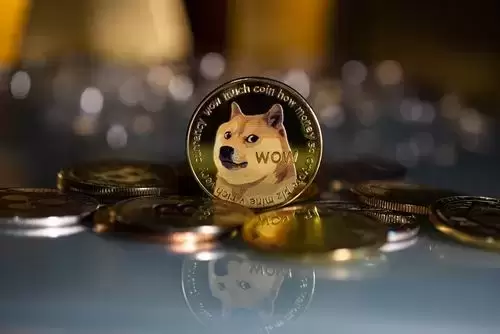 |
|
 |
|
 |
|
 |
|
 |
|
 |
|
 |
|
 |
|
 |
|
 |
|
 |
|
 |
|
 |
|
 |
|
 |
|
Cryptocurrency News Articles
5 Valuable Coins From the 1960s That Might Be Hiding in Your Coin Jar
Apr 03, 2025 at 09:17 pm
You might want to check your old coin jar or inherited collection—some U.S. coins minted in the 1960s are now commanding thousands of dollars at auctions

People who grew up in the 1960s might recall that the standard U.S. coins used in daily circulation were made largely of silver. This practice ceased in 1965 as the government sought to reduce government spending on silver purchases.
Now, experts and collectors are noticing a surge in prices for coins minted in the 1960s, especially those in uncirculated grades. This interest stems from several key factors, including the coins’ rarity due to low mintage numbers, excellent condition despite age, and silver content, which has become more valuable.
Here are five valuable coins from the 1960s that you should keep an eye out for.
1. 1963-D Washington Quarter (Denver Mint)
This silver quarter is renowned for its scarcity in mint condition. While millions were struck, Deepcoin Value says that only a handful survive in pristine grades. Coins graded MS68 by the Professional Coin Grading Service (PCGS) have sold for up to $24,000.
2. 1965 Washington Quarter
In 1965, due to a coin shortage and the Vietnam War, the U.S. Mint ceased production of silver quarters and transitioned to a copper-nickel clad composition for the state quarter. However, a few Brilliant Uncirculated (BU) examples from this transition year are incredibly rare.
One such 1965 quarter sold for over $12,000 at auction in 2023. It was graded PR66 CAM by the PCGS, denoting exceptional grade and a special "cameo" mirror-like strike.
3. 1962-D Washington Quarter (Denver Mint)
Another gem from the early 1960s, this silver quarter is highly sought after when in mint condition. One 1962-D quarter sold at auction for $18,400 in 2012, mainly due to its exceptional grade of MS68 and preserved state.
4. 1960 Lincoln Penny (No Mint Mark, Deep Cameo)
Common in circulation, some 1960 Lincoln cents were struck with a special proof-like finish known as Deep Cameo. These coins, particularly those without a mint mark (struck in Philadelphia), are highly collectible and have been valued accordingly.
Recently, a 1960 Lincoln cent in Deep Cameo grade and without a mint mark sold for $2,600 at auction.
5. 1960 Ben Franklin Half Dollar
Before the Kennedy Half Dollar debuted in 1964, the Franklin Half Dollar was widely used. While most are worth only their silver content (around $11–$12), those in uncirculated or proof condition can sell for as much as $300 or more.
These 90% silver coins have become increasingly collectible as low grades, like Good 40, can fetch $75, while higher grades, like MS65, may command prices of $300 and above.
Why These Coins Are So Valuable
Several factors contribute to a coin’s astronomical worth.
Coins in higher grades, especially those in uncirculated grades like MS65 or 66, are rarer and more desirable to collectors, thus fetching premium prices.
Coins from specific years or mints can be more valuable due to lower mintage numbers or unique attributes. For instance, the 1963-D Quarter is known for its rarity in uncirculated grades.
Coins in Brilliant Uncirculated (BU) or Proof (PR) condition, which are essentially mint-fresh and show no signs of wear, are highly prized by collectors.
Coins with unique varieties, such as different die combinations or striking anomalies, can also become collector's items and command higher values.
How to Identify and Value Your Coins
If you believe you have one of these coins, don’t rush to a pawn shop. Instead:
Coins in lower grades or those with significant wear will command lower prices.
Where You Might Find Them
It’s not impossible that a rare and valuable 1960s coin is hiding in plain sight. A casual coin collector or even someone with no prior knowledge could unknowingly possess a small fortune in the form of a forgotten quarter or penny.
Coins from the 1960s were used in everyday transactions, so they could be found in old coin jars, inherited collections, or even in the lining of an antique coin purse.
It’s also worth checking with older family members or relatives who might have been collecting coins in the 1960s. They could have valuable coins that they are willing to share or sell.
Final Thought
With inflation rising rapidly and collectibles like stamps, postcards, and coins booming, it’s no surprise that people are
Disclaimer:info@kdj.com
The information provided is not trading advice. kdj.com does not assume any responsibility for any investments made based on the information provided in this article. Cryptocurrencies are highly volatile and it is highly recommended that you invest with caution after thorough research!
If you believe that the content used on this website infringes your copyright, please contact us immediately (info@kdj.com) and we will delete it promptly.
-

-

-

- EV3 Invests in Dtravel to Expand the DePIN Ecosystem
- Apr 10, 2025 at 05:30 pm
- EV3, renowned for championing Decentralized Physical Infrastructure Networks (DePIN), is putting their support behind Dtravel to further its mission of creating an innovative alternative to centralized vacation rental marketplaces. This partnership underscores a shared vision for a future where sovereign networks empower global communities.
-

-

-

-

-

-

























































